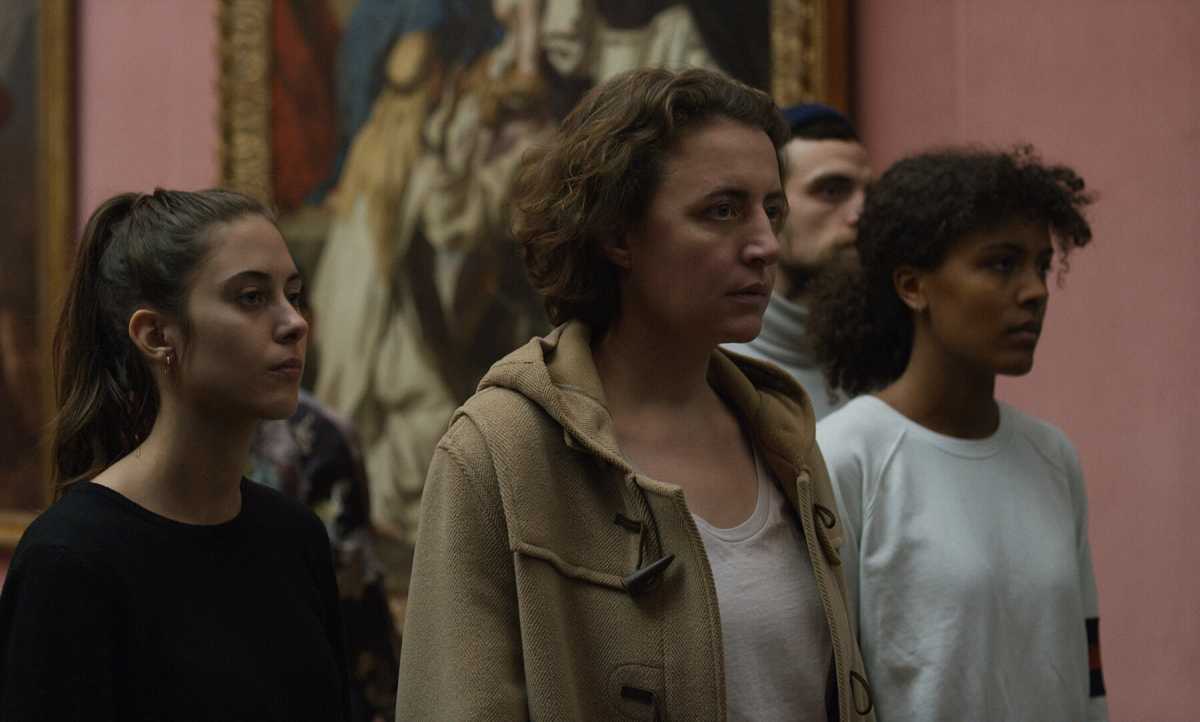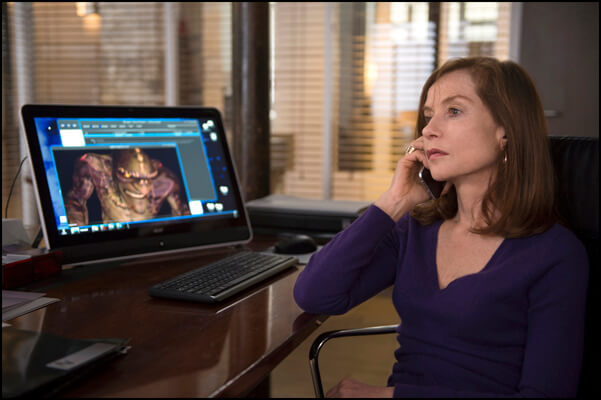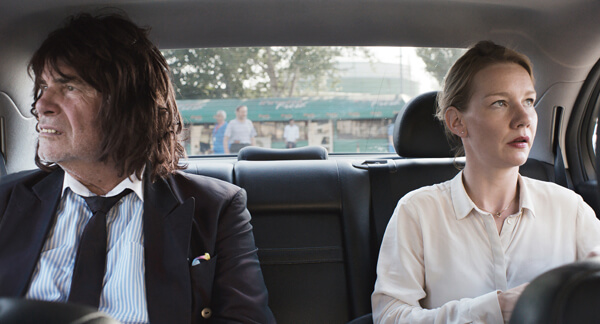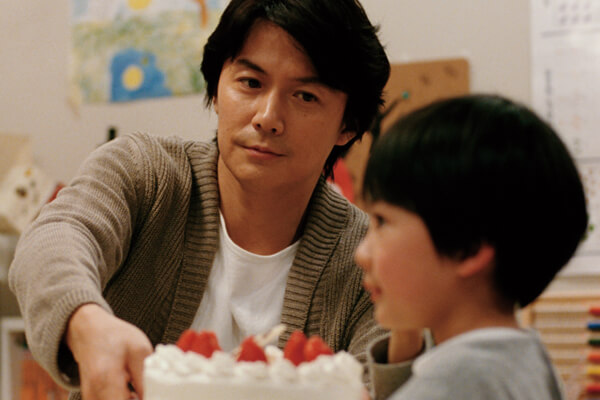Sometimes puzzlement can be a sign of innovation. I’d be lying if I said I fully understood German director Angela Schanelec’s “I Was at Home, But…” The film wanders in and out of narrative threads as though channel-surfing, keeping its emotional tone detached most of the time but allowing Astrid (Maren Eggert) blunt outbursts of anger. It begins and ends outside human life altogether, starting with a dog chasing a rabbit and then curling up with a friendly donkey after having made a meal out of its prey. The final scene brings us back full circle to the animal world.
Astrid is a middle-aged mother whose husband has recently passed away. Her teenage son Phillip (Jakob Lassalle) vanished for a week. Upon returning, he needs to go to the hospital to have a septic toe amputated. Astrid negotiates a bike purchase with a man whose vocal chords have been replaced by an electronic talk-box. She gets into a lengthy and passionate conversation — which begins with one of the film’s few camera movements — with a filmmaker. Another storyline introduces a couple who can’t decide if they want to have children.
“I Was at Home, But…” takes a story that could form a family drama and drains most of the usual markers of emotion from it. The Guardian critic Peter Bradshaw likened it to Michael Haneke, but that seems like a reaction to the German language. Unlike the Austrian director, Schanelec is no misanthrope. The title gestures at Yasujiro Ozu’s comedies of everyday life, such as “I Graduated, But…” and “I Was Born, But…” Schanelec, however, throws out half the scenes that would serve as explanatory connecting tissue. Phillip just shows up, wearing soiled clothes, and unless one has already read a plot description it’s not immediately obvious that he has spent a week in the woods.
Schanelec has a great eye for framing. But the blocking and camera positions of “I Was at Home, But…” reflect a distance from her characters. Attractive set-ups are usually held so long that they start to feel awkward. The performances are even more detached, with the exception of Eggert’s. The characters stand rigid, as though Schanelec directed them to imitate statues. Robert Bresson and the team of Jean-Marie Straub and Danièle Huillet have frequently been cited as an influence on Schanelec’s blank direction of actors. Just as Straub and Huillet reinterpreted literary texts in incongruous modern settings, “I Was at Home, But..” puts “Hamlet” at a distance by having German school kids perform it in English. Do such young children understand its meaning? Do they even have enough command of the language they’re speaking to do so?
Just when one gets used to the film’s tonal range, Astrid blows up at her daughter because she cooked a meal alone. Far from being affectless, she actually expresses an anger at her children that cinematic mothers are rarely allowed to acknowledge without becoming villains. But the film’s tranquilized mood returns after that scene.
“I Was at Home, But…” uses music — folk/ rock musician M. Ward’s cover of David Bowie’s “Let’s Dance” — to ground a montage that stretches from a cheerful scene of Astrid and her children dancing to a shot of the sky to a trip to an art museum. The logic behind this is stream-of-consciousness, if one exists. It guides the whole film, although the procession of scenes starts to rhyme with each other. Two scenes take up about a quarter of “I Was at Home, But…” Or rather, two conversations: one where Astrid talks about returning the bike and one in which she argues with the filmmaker about his decision to work with terminally ill people alongside professional actors. The stakes of the former seem banal; the latter is quite engaging. Schanelec gives both the same weight.
Film at Lincoln Center preceded the run of “I Was at Home, But…” with a week-long retrospective of Schanelec’s films. She has lingered behind other members of the “Berlin School,” such as Maren Ade, Christian Petzold, Ulrich Köhler, and Valeska Grishebach, in American exposure. She made her first feature 25 years ago, yet “I Was at Home, But…” is her debut American release.
This is a demanding film, but this says something about American audiences and distributors’ reluctance to engage with challenging work. “I Was at Home, But…” is impossible to pin down in one sentence. It’s not remotely topical — thank God that it won’t inspire headlines about how it’s the film we need now. But it is incredibly eloquent about the artificiality of constructing drama and the difficulties of expressing emotion, suggesting that most films err on the side of an unearned empathy. Schanelec upends cheap certainties in favor of ambiguities and open-ended stories that read truer to life.
I WAS AT HOME, BUT… | Directed by Angela Schanelec | In German with English subtitles | The Cinema Guild | Opens Feb.14 | Film at Lincoln Center, Elinor Bunin Munroe Film Center — Howard Gilman Theater, 144 W. 65th St.; filmlinc.org



































